It has been sometime since I took a look at some of the internal metrics of the local market, I haven’t done it simply because I am not sure of the usefulness of the information. Anytime you add something to your trading system or market perspective you have to be certain that it is adding value of some kind and you are not just doing it to try and prove to yourself either how clever you think you are or you are attempting to shore up your existing narrative.
In the past, I have looked at the contribution of various stocks to certain indices such as the contribution of the FANG stocks to the NASDAQ 100. This was an exercise that was made easy because of the existence of the FANG index. The local market, unfortunately, does not have such a neat division of equities into their own indices. Our index structure is quite chaotic courtesy of ceding the responsibility for their calculation to Standard and Poors. As such pulling out individual specialised indices to see where the performance is being generated is a painful process. However, there is a little bit of a shortcut. The list below was taken from Market Index.
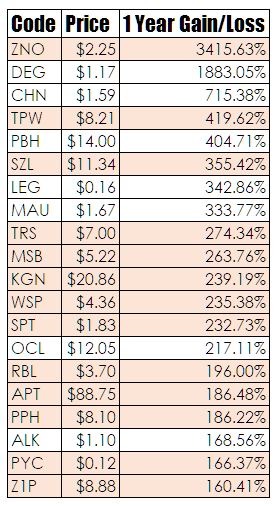
The stocks I have highlighted have in my view benefited from the current pandemic, they range from online retailers to payment gateways to those with some link to potential therapies or associations with COVID-19. The rest seem have an association with gold. This brings me perhaps the point of this missive – the local market is a stock pickers market geared to specific market-related events be they a pandemic or a rise is a commodity price. It is not a buy a bunch of stocks and hope for the best style of market. The collapse in the major banks since 2016 should have convinced many that this was not the case. In fact, the local market when viewed on the basis of the index only is a poor performer. We lag well down the bottom of general performance.
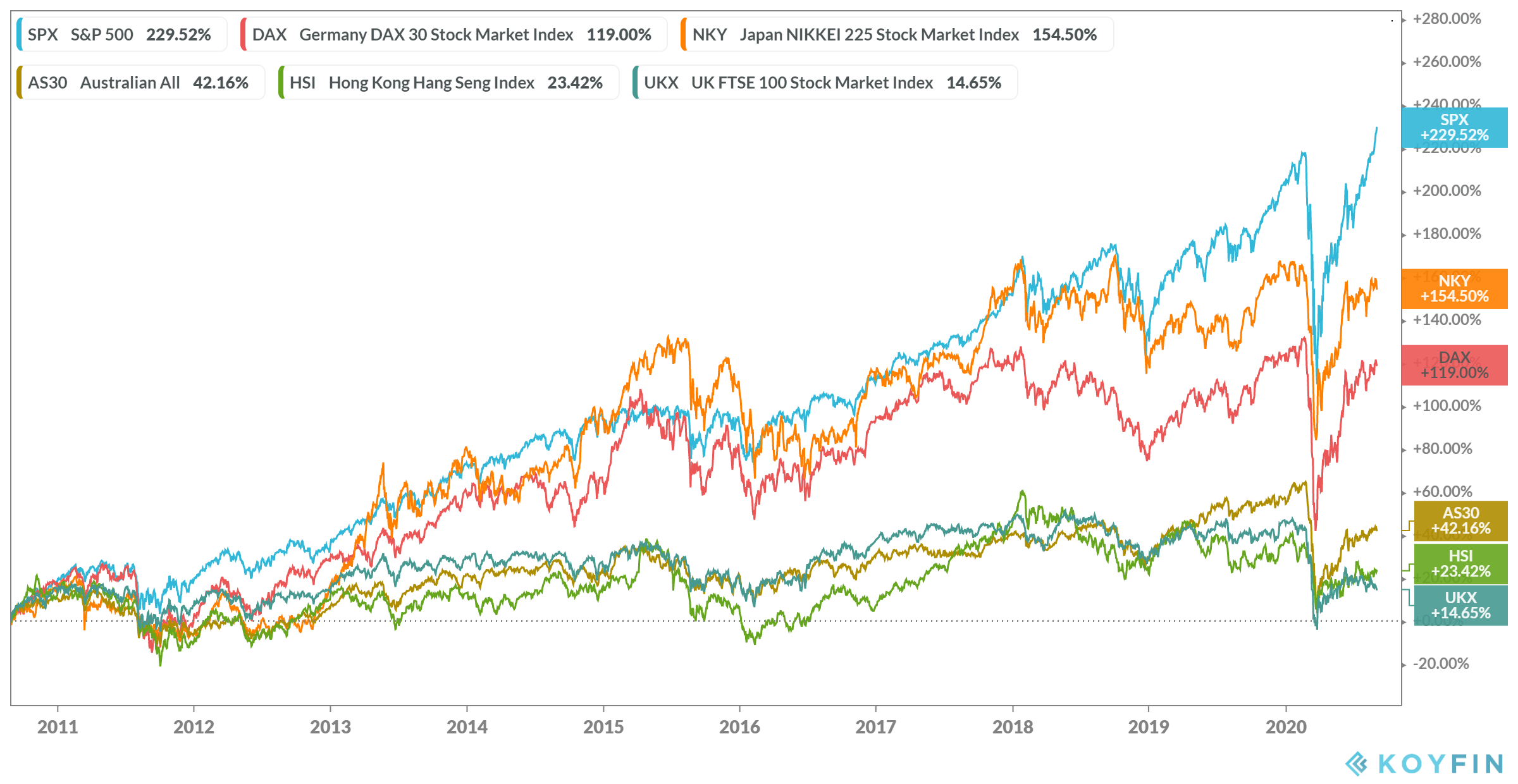
We can get a sense of this moribund performance when we examine the cumulative 52 high/low index.
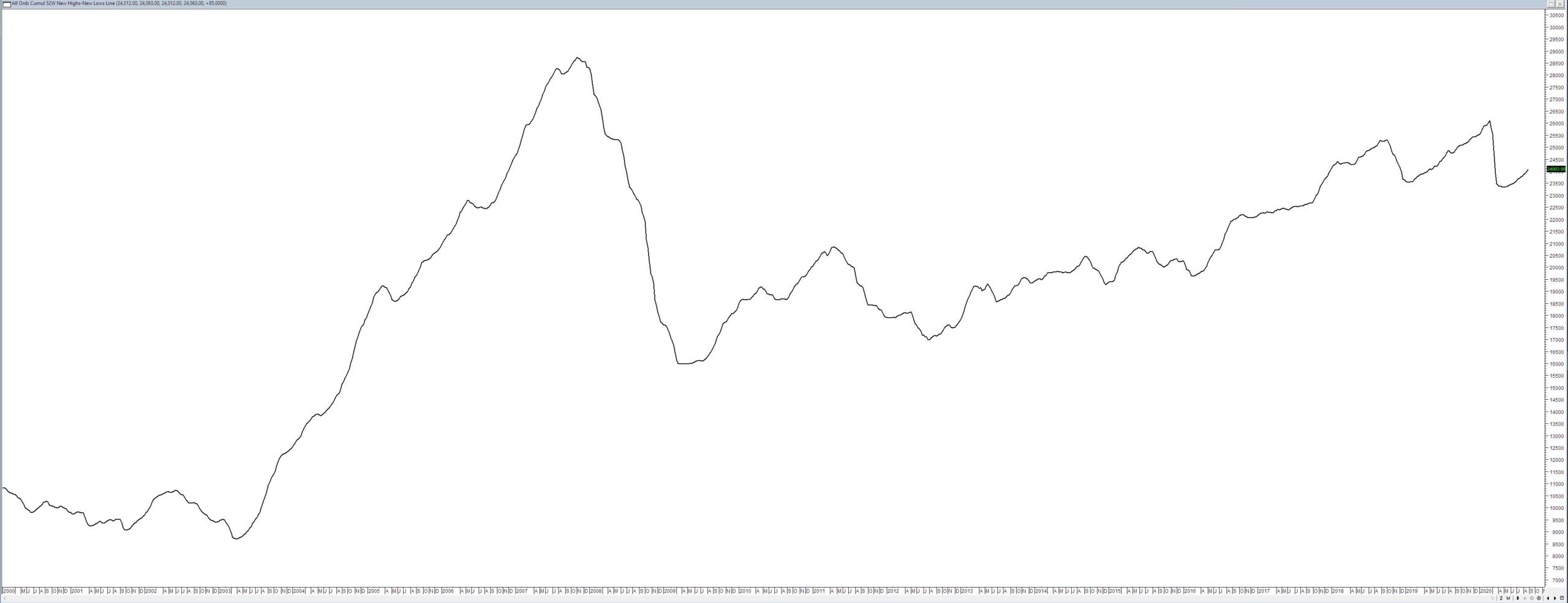
As can be seen, the last true clean trend this index experienced was in 2003/2007 which was the last time the comparative performance of the local market was better than that of the US.
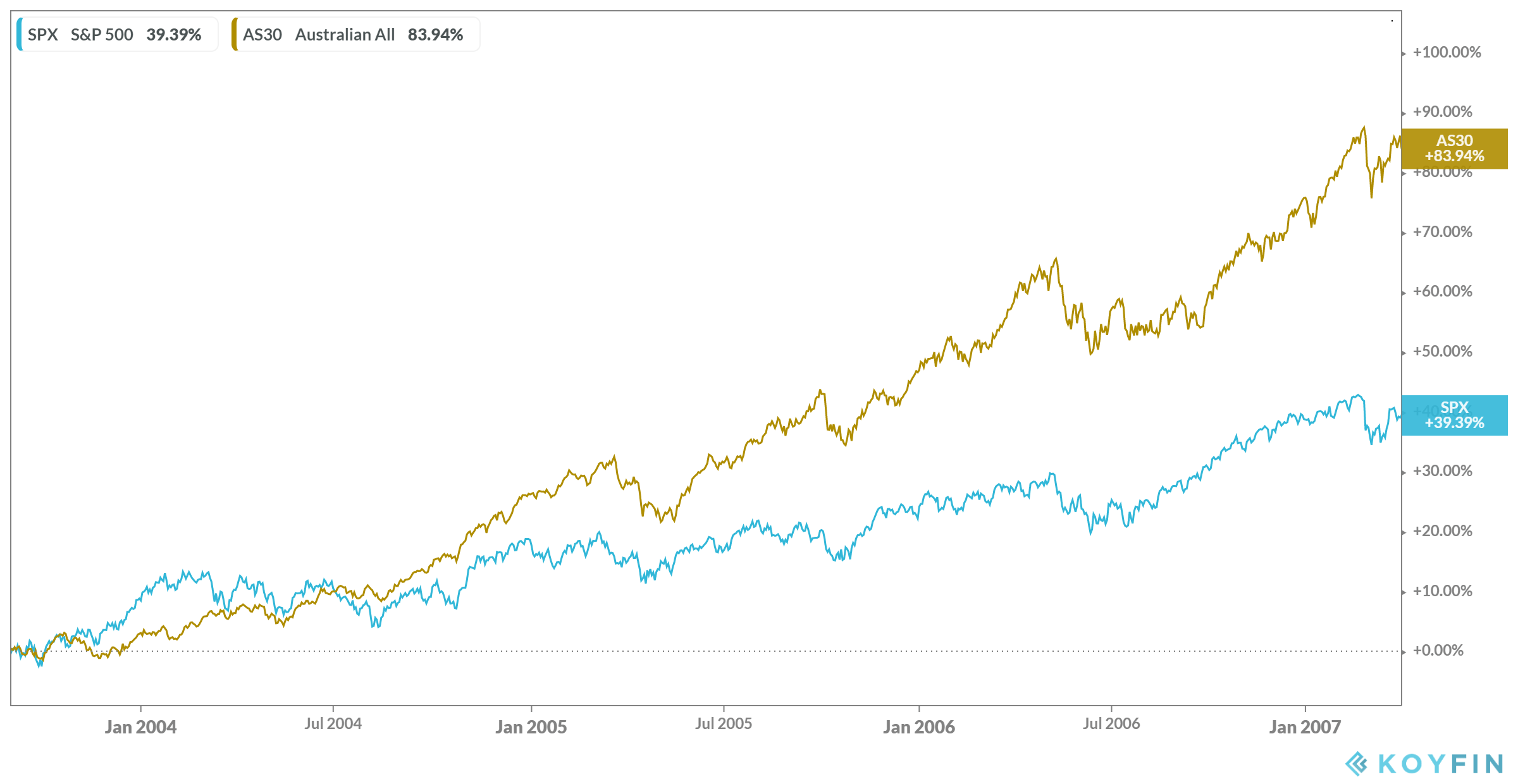
The somewhat moribund performance of the index can also be seen when we look at the number of stocks above their 200-week moving average.
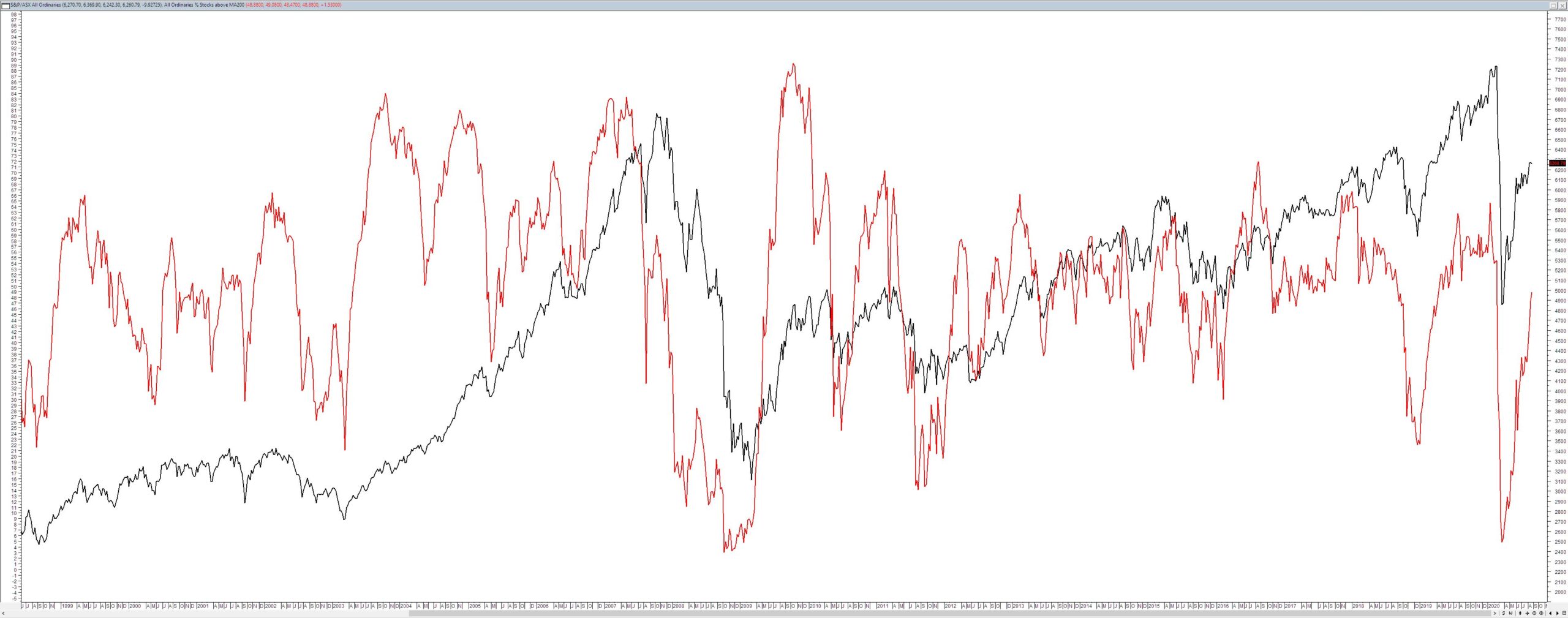
This number compares poorly with the same metric on the S&P500.
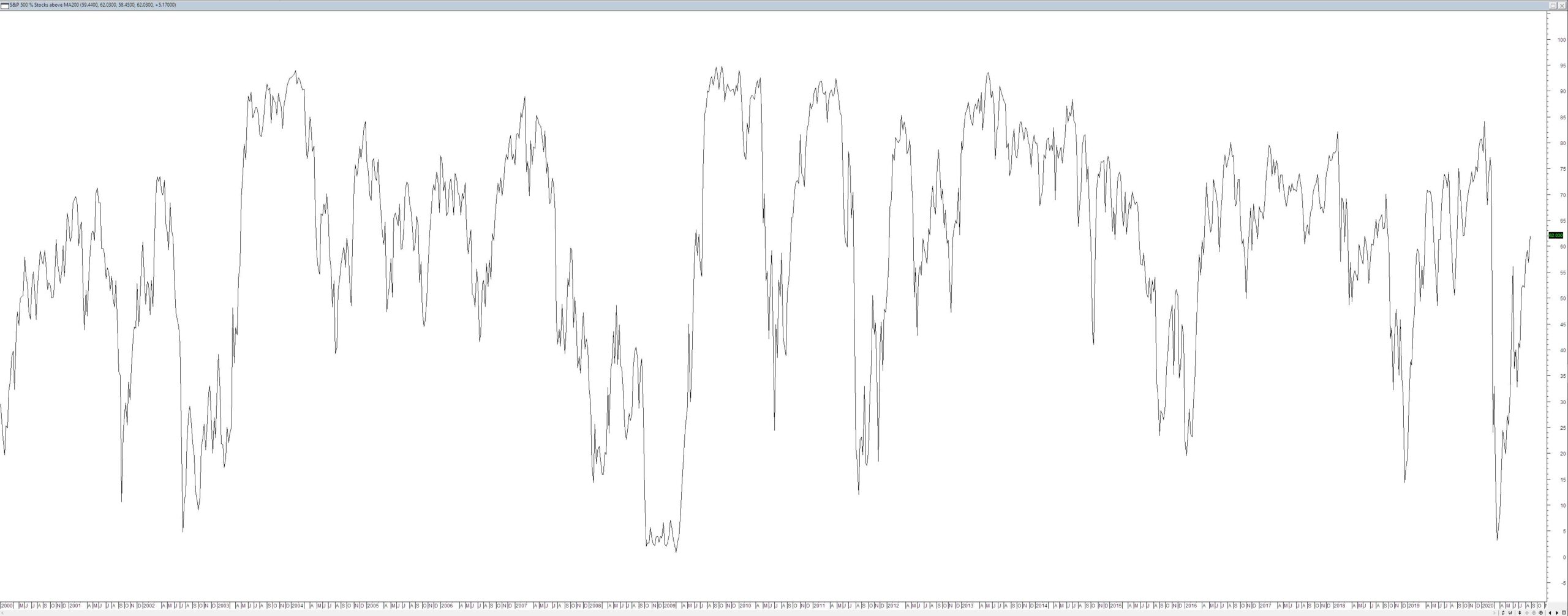
This does lead back to the part of the original problem as to what does all this sort of stuff tell us as we already know that the US market and in particular a certain segment of the tech sector is doing all the heavy lifting. We also know or should know that the local market is a trader specific market that responds to specific events – if there is no specific trigger event then the local market tends to go nowhere. This is particularly true when it faces stiff competition for investment funds from the residential real estate sector.
So whats a trade to do? That’s actually pretty simple get a system or don’t play.
PS Don’t confuse having fancy metrics for actually having a system – none of the above inv=fluences my trading decisions at all – it is simply of academic interest to me.





This is one of Chris’ most important and relevant blog posts. It underscores why research and analysis takes up the vast majority of time of what trend traders do. The buy and sell actions are only a very small part of the trend following trading process.
A website like Finviz provides sector and stock relative comparison strength graphs over various time-frames. For the current out-performing US market, the strongest sectors are technology, communication services, and consumer cyclical. This narrows down the field to subsequently search for the strongest stocks in those sectors. I also perform a daily watchlist scan of ETFs looking for breakouts and new highs. This is the most interesting part of the trading process. The longer-term holding process, even though profitable, is unexciting.